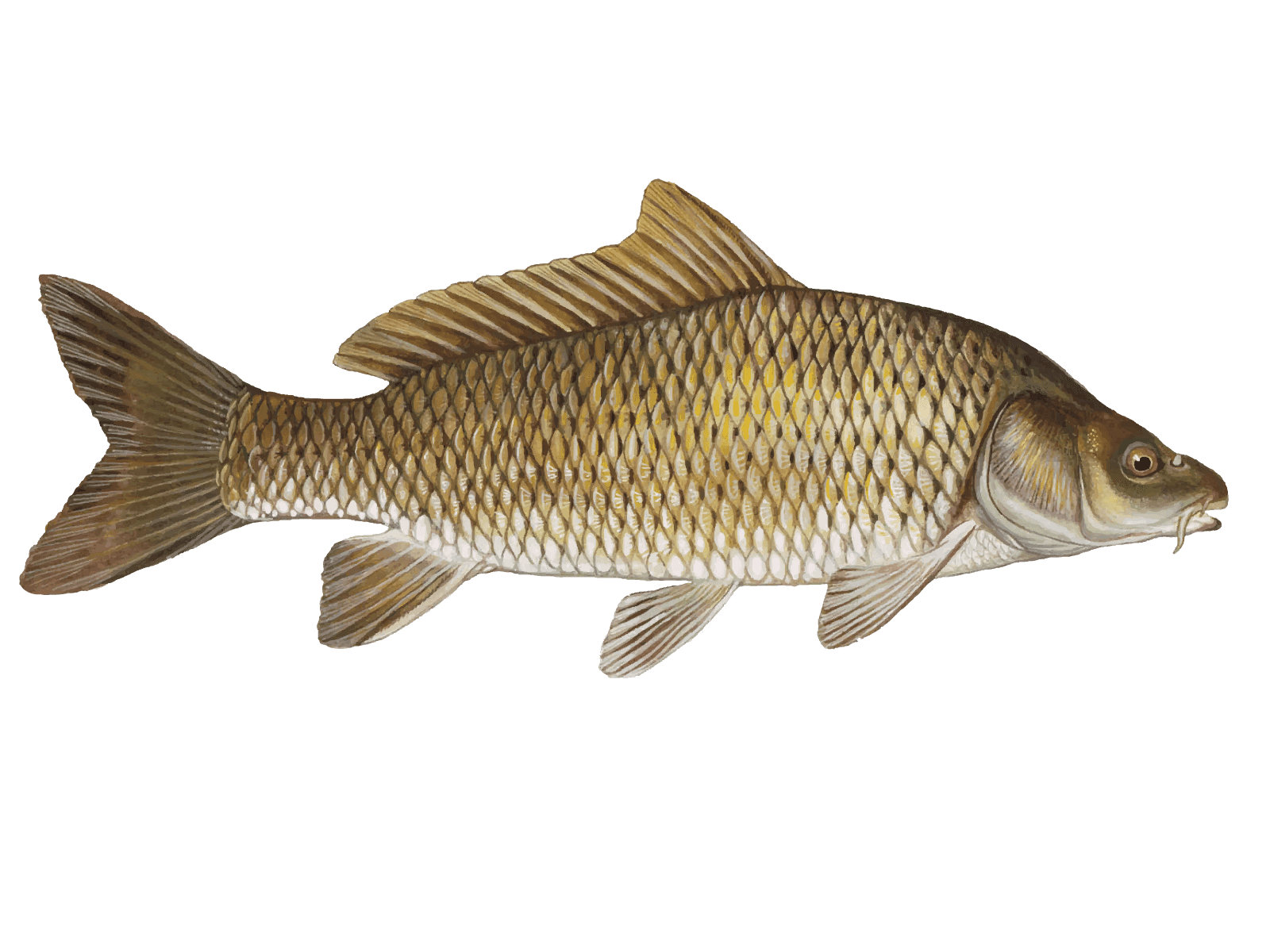Common Carp

Species Details
Cyprinus Carpio
Cyprinidae
Cypriniformes
River, Lake, Backcountry
5 - 100 lbs.
16" - 47"
Common Carp (Cyprinus carpio) Description
The Common Carp is a popular game fish that thrives in warm freshwaters. It has a golden-yellow hue on its body mixed with olive color on its top and face. They are heavy-built and have a barbel on each side of their lower jaw, just like some catfishes. These barbels are whisker-like sensory organs that help the fish get a taste of their environment; making them alert for both food and predators.
They’re mostly found in waters that are stagnant such as lakes, lagoons, sloughs, reed beds, and slow-flowing rivers and they easily thrive in both clear or murky water. The common carps are voracious bottom-feeding omnivorous. They eat aquatic plants, bottom-feeding insects, crustaceans, crawfish, and worms.
Interesting Facts About the Common Carp
- The common carp is not native to the US. It’s the 3rd most introduced fish species in the world and is considered as pests in some countries, including the United States. They have a knack for dislodging aquatic plants which destroy some homes of tiny fishes and in turn reduces the number of both plants and other fish species. Though they can be destructive, they do have benefits such as dispersing seeds of aquatic plants. It’s just that in some areas they lack predators to keep their numbers in check.
- They were brought in the US mainly for food but did not become a popular choice by the general market.
- Wild common carps and domesticated ones look slightly different. Wild common carps have a slimmer body compared to domesticated ones which are stockier and a bit rounder.
Common Carp Size & Speed
Common carps are known for their stocky built body. Anglers love their fighting spirit; they trash around and they don’t get tired quickly. They are large fishes with average sizes of 15.75 - 31.5 inches and their average weight is 4.5-31 lbs. Anglers would often target the carps that are around 20 pounds or more as these are the more challenging game fish. They can also grow to enormous weight and sizes. The longest caught was 47 inches, and different anglers around the world caught 100 pounders (though the biggest one is 100.5 lbs).
Fishing Habitat & Distribution of the Common Carp
The common carp is known as a hardy fish that thrives in most areas around the world, including North America. You can check the nearest lakes, inlets, and ponds in your area and you will most likely get a catch of this carp.
They prefer water temperatures of 35-85 F° but look for temperatures of 73.4°F and 80°F if you want to catch a good 20 pounder carp. They mostly stay at the bottom but they do go to the surface to catch some insects or if people are feeding them bread.
During fall and spring, they come into the shallows and feed aggressively. It’s also the time where they gather in large schools to spawn their eggs. They can lay about 300,000 eggs in a single spawn, which is why it’s hard to eliminate the fish where it is considered invasive. Once summer hits, the carps spread out and they go slightly deeper, about 8-12 feet deep. During winter, they become lethargic but they will grab food if given the opportunity.
Fishing Tips to Catch a Common Carp
Carp fishing is popular among anglers. They’re known for their strength, which is why anglers who want to test their skills are quite fond of this fish. There are various ways to catch common carps; you can do it through fly fishing, sight fishing, or fish trolling.
For the equipment, a nine-foot rod is a standard length for these freshwater fishes. Using a 7 or 8 weight is good for carps around 10 pounds. If you want to catch 20 pounder common carps, use a weight of 9 or 10. For hooks, best to use #4 or #6 circle hooks for the 10-20 pound range, but you can use size #8 or #10 if you feel like you’ll be catching more than 20 pounds.
Seasons come in factor when you’re trying to catch a fish. In winter and fall, the common carp will be more active during the highest temperature of the day, which is the early afternoon. In summer, try to fish at sunset and sunrise where it’s colder in the day.
Always check the water where would you think they eat or stay before you set your gear. Check where insects stay or where the water is more active. These fish tend to get spook too easily; Try to avoid using shiny metallic rods or reels that glisten in the water as these might scare them. Don’t move your rod too much as that might spook them, too. Let your lure stay still and wait for the fish to take your bait. Use a hair rig if you’re trying to catch this fish from the bottom. A hair rig works great for carps that are hook shy as this will help them avoid seeing the hook.
Acquiring baits for common carps is pretty easy. You can use bread, corn, and boilies. Bread is more effective for carps that live in ponds since they are familiar with it. The downside with bread is they fall off too easily. Most anglers use corn as they don’t fall easily like bread. Boilies are the most expensive, ranging from 4- 10 dollars, but they don’t fall easily and carps love them.







